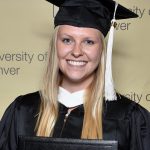Empowering Children in Their Community
Kodo Kids Celebrates NAEYC The Week of the Young Child™
Part 2 of 3 of our series this week. If you haven’t done so already, be sure to check out the associated video content for this blog series.
Children naturally seek collaboration to help solve problems. In any early childhood classroom, it is common to hear “I can help!”, “I need some help over here!”, or “Let’s do it together!”. Children understand that they are far more powerful together than they are apart.
During this long term inquiry, the children came to a point where they had done their own research and made plans but were seeking answers to questions that the immediate community inside our school couldn’t answer. The teachers reflected on how to keep the momentum moving forward and decided the next step was to invite the broader community into the classroom.
One of the parents, Adam, an architect was invited into the classroom for a day. The teachers shared what the children had done in their planning thus far and some questions they had raised concerning the outdoor space. Adam brought in real architectural drawing tools, vellum drawing paper, and examples of his own drawings. The children presented their collaborative drawing of the outdoor space they had completed and asked for feedback. Adam engaged them in measuring the outdoor space and shared strategies for converting the measurements into a drawing. The children used these strategies to inform their future planning.
The next community member invited into the classroom was, Heidi, the person in charge of fundraising and donations at the Boulder JCC. The children had settled on two items they e and their next step was to raise funds to purchase them. Heidi shared strategies to track how much money had been raised and also how to make sure the people who donated to our campaign were given a proper thank you. The children took her advice and applied it to their bake sale. They created a large thermometer to track how much money they had raised and colored it in after counting the money earned each day. With the help of the studio teacher, Leah, the children transferred the drawings of their plans onto styrofoam pieces to be used as stamps. These stamps were used to print stamped versions of their plans onto thank you cards.
Opening the door to community members not only kept the momentum of the project going for the children, but it was also a way to show the community the wonderful things that were happening in the classroom. The teachers also kept the interest of the community going with regular updates on the progress of the project. Aimee and Jordan created a video that was shared in preparation for the bake sale fundraiser. They sent it to the entire school community. Many families ended up sharing this with extended family and friends, expanding the network of support for the children’s plan even further. The ripple of the project continued to grow wider and wider.
Creating the video also offered the teachers a way to grow in their own practice and elevate the role of teacher as a professional. Aimee and Jordan learned new skills on how to create, edit, and share documentation in the form of a video. After the installation of the , they created large panels of documentation that encompassed the project in its entirety. They consulted with other teachers, a museum documentation specialist, and administrators to create a detailed visual representation of the long term inquiry.
As teachers, we are often engulfed in the amazing experiences that happen inside the walls of our classroom every day. There are often valuable and diverse resources within the community outside of school that may enrich the learning experience already happening even more. That community can look like siblings, parents, grandparents, or local business owners.
Spark Community-Based Learning in Your Classroom:
- What community members can you think of that may be a resource for learning about a specific topic or interest?
- Can you think of any ways to make the children’s learning visible to the community outside of your school?
- How can you support children in knowing where and how to seek community support?
 Jordan Kaseeska is the Education Specialist at Kodo Kids. She received her undergraduate degree from Colombia College Chicago in Early Childhood Education and went on to earn her masters degree from University of Colorado- at Denver in Education and Human Development with a focus in Early Literacy. She has used her passion for constructionist style teaching in both public and private early childhood and elementary schools.
Jordan Kaseeska is the Education Specialist at Kodo Kids. She received her undergraduate degree from Colombia College Chicago in Early Childhood Education and went on to earn her masters degree from University of Colorado- at Denver in Education and Human Development with a focus in Early Literacy. She has used her passion for constructionist style teaching in both public and private early childhood and elementary schools.

